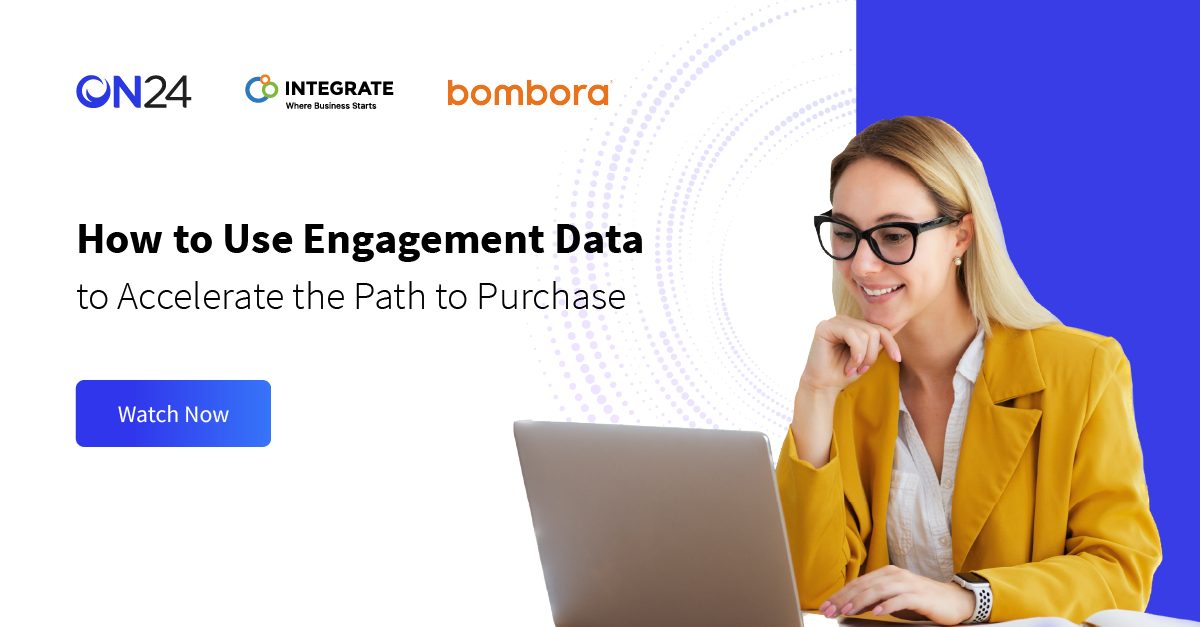What is Engagement Analytics and Why is it Important?

Anyone can produce content on the internet. It’s easy to do and, done well, can pull in a lot of eyes on a brand’s name. But simply generating traffic and audience awareness isn’t enough anymore. B2B marketers, in particular, need to worry about driving quality traffic — and engagement analytics can help.
What Are Engagement Analytics?

In simple terms, engagement analytics is the analysis of audience interaction with your content. The goal is to show you how people engage with your marketing content and provide you with actionable insights that’ll help you meet your business objectives.
Put another way, engagement analytics shows you how audiences interact with your content, who interacts with it and why they may be interested in your message in the first place.
But what data provides you with these insights? There are a lot of metrics you can include in you analytical process, but some common variables to consider include:
-
- New Users/Sessions
- Activity on a website or in a digital event
- Downloads
- Time on page/watching a video
- Time spent within an event, like a webinar
- Resources downloaded
- Chats initiated
- Pages per session
- … And a lot more
Collecting and analyzing these metrics can help you hone your marketing strategies and tactics to drive more impactful results.
What Engagement Analytics Can Tell You

While a view count can tell you whether or not a piece of marketing was successful, you’ll need to dig deeper to get a better understanding of your audience.
For example, demographics can reveal even more about the success of your content. Instead of an anonymous view count, you can see where audiences live — from countries and states right down to cities.
Demographic data is particularly important — especially if you want to understand if your content engages audiences within a new market or region.
Engagement data can also tell you where people are finding your content. Do they use referral links from another blog? Are they coming from a webinar you recently hosted? What about an on-demand demo? Social media?
By understanding where engagement is coming from, you’ll know who supports your content and what paid places have been worth the investment by getting this information.
But what about engagement with your actual content and interest in your solution? Here, dedicated digital environments — like webinars, virtual conferences, content hubs and more — can help suss out genuine interest from someone who’s just perusing.
Let’s take a virtual summit for example. Attendance at a virtual summit tells you that someone is engaging with your message on a superficial level: they’ve registered and want to hear what you have to say. But their activities within that environment can tell you so much more.
Are they, for example, reacting to your keynote presentation and asking questions? That’s a great digital engagement signal! Or are they seeking out case studies, e-books and resources to download? If they are, they’re likely engaged but want to consume more content first.
The best engagement signals to look for are the ones where your audience actively comes to you and raises their hand. For example, a conversation over a chatbot is great engagement — so is a meeting booked through a webinar.
Where Can I Find Engagement Analytics?

A lot of platforms and services provide you with engagement data, but most of the analysis is likely going to fall on you. You need to assess your engagement data against specific goals and KPIs you set out.
However, platforms and services do provide you with in-depth engagement metrics. Platforms like Twitter, LinkedIn and Marketo are a few examples. These services will provide you with information like impressions, click-through rates and more.
YouTube is another example of a platform that can offer you a wide range of engagement analytics. This service, and others like it, can show you the times at which people have exited the video and stopped watching.
B2B marketers should seek out and use platforms that both collect this type of engagement data and integrate the information you want with the martech stack you use. ON24, for example, provides ON24 Connect, which helps share information collected in ON24 products to the MAPs and CRMs of your choice.
Questions to Keep in Mind

When analyzing your data, it can be easy to overthink aspects or get distracted by certain factors. To stay focused, you should keep specific questions in mind as you hone your digital marketing strategies.
For example, it’s always crucial to keep the question of customer satisfaction at the top of your plan. You should zoom in and start asking yourself what your website visitors are doing when they come across your content from this broader scope.
Every single viewer has some motive for doing what they’re doing. You should use your analytical data to figure out what those goals might be and whether they could accomplish them during their visit if they weren’t able to achieve their goal, then finding out why is going to be vital data for your strategy.
Don’t forget that you can invite visitors to take surveys later on via email.
Always Be Engaging

Driving content success is a matter of knowing what connects and what doesn’t with audiences. The best tool we have to know how well our message resonates is engagement metrics. Be selective in the metrics you use, measure them against your KPIs and integrate your tools so you can get the big picture.
And, as always, don’t be afraid to experiment!

